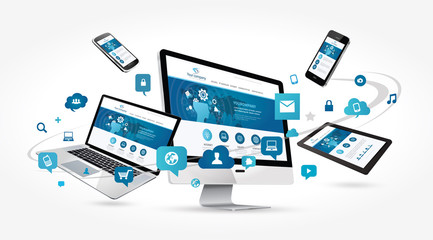What is a Self-Service Platform?
A what is ssp is a digital solution which allows users to independently perform tasks, access information, and manage services without the need for direct interaction using a company’s staff. These platforms are designed to be user-friendly, offering intuitive interfaces and comprehensive resources that guide users through the process of achieving their goals.

Self-service platforms can be found across many industries, from support and e-commerce to software being a service (SaaS) and online marketing. They empower users giving them treatments for their interactions using a brand, enabling the crooks to find answers, go shopping, or manage accounts at their convenience.
Key Features of Self-Service Platforms
Self-service platforms typically offer a variety of features that will make them accessible and valuable to users:
User-Friendly Interface: The success of a self-service platform largely is determined by its ease of use. A well-designed interface allows users to navigate system effortlessly, find what they already want, and finish tasks efficiently.
Knowledge Base and FAQs: A comprehensive knowledge base with articles, videos, and FAQs is important for guiding users through common issues or questions. This reduces the need for customer support and empowers users to unravel problems on their own.
Account Management: Users can manage their profiles, preferences, and settings directly through the platform. This might include updating contact information, managing subscriptions, or viewing transaction history.
Automation Tools: Self-service platforms can lead to automation tools that simplify repetitive tasks. For example, in a marketing platform, users might automate email campaigns or social media posts without manual intervention.
Personalization: Advanced self-service platforms use data analytics to personalize the consumer experience, offering tailored recommendations, content, and services according to individual preferences and behaviors.
Security and Privacy: Robust security measures are critical for self-service platforms, specially those that handle sensitive information. Features including multi-factor authentication, data encryption, and privacy controls make sure that users’ details are protected.
Benefits of Self-Service Platforms
The adoption of self-service platforms offers numerous benefits for both businesses as well as their customers:
Enhanced Customer Experience: Self-service platforms provide customers with the flexibility to interact using a brand on their own terms, whenever you want. This convenience leads to higher customer happiness and loyalty.
Cost Efficiency: By enabling users to perform tasks independently, businesses can help to eliminate the demand for customer care staff, leading to significant personal savings. Automation further enhances efficiency by handling routine tasks.
Scalability: Self-service platforms can easily scale to accommodate growing user bases without resorting to proportional increases in support staff. This is particularly important for businesses experiencing rapid growth.
Faster Issue Resolution: Users may find ways of their problems faster through a self-service platform compared to waiting for support. This speed is important in today’s world, where instant gratification is usually expected.
Data-Driven Insights: Self-service platforms generate valuable data on user behavior, preferences, and pain points. Businesses can analyze this data to improve the woking platform, enhance services or products, and tailor marketing strategies.
Examples of Self-Service Platforms
Self-service platforms are prevalent in several sectors, each serving different purposes:
Customer Support Portals: Companies like Zendesk and Freshdesk offer self-service support platforms where users can submit tickets, search knowledge bases, and embark on community forums.
E-Commerce Platforms: Amazon and Shopify enable users to handle their orders, track shipments, and handle returns directly through their accounts, without needing to contact customer support.
Digital Marketing Tools: Platforms like Google Ads and Facebook Ads provide self-service interfaces where users can cause, manage, and optimize ad campaigns, track performance, and adjust budgets.
SaaS Management Platforms: Software providers like Salesforce and Microsoft 365 offer self-service portals where users can manage their subscriptions, access support resources, and customize their software environments.
Telecommunications: Many telecom companies provide self-service portals where customers can pay bills, upgrade plans, and troubleshoot connectivity issues.
Challenges and Considerations
While self-service platforms offer numerous advantages, additionally they come with challenges:
Usability: A poorly designed self-service platform can frustrate users and drive them away. Ensuring a seamless user experience is important for success.
Limited Human Interaction: Some users may prefer human assistance, especially for complex or sensitive issues. Businesses must balance self-service options with the availability of support.
Security Risks: As self-service platforms handle sensitive data, they are potential targets for cyberattacks. Businesses must put money into robust security measures to guard user information.
User Adoption: Getting users to adopt and effectively utilize a self-service platform can be tough. Proper onboarding, education, and continuing support are crucial to encourage adoption.
The Future of Self-Service Platforms
The way ahead for self-service platforms looks promising as advancements in artificial intelligence (AI), machine learning, and natural language processing (NLP) still enhance their capabilities. AI-driven chatbots and virtual assistants have grown to be more sophisticated, offering users instant, personalized support without human intervention.
Additionally, the integration of self-service platforms with digital ecosystems, for example Internet of Things (IoT) devices and augmented reality (AR), will further expand their functionality and appeal. As businesses always prioritize customer experience and operational efficiency, self-service platforms will remain a critical tool within their digital strategy.
Self-service platforms have revolutionized just how businesses talk with their customers, offering a convenient, efficient, and scalable solution for managing various aspects of an individual experience. By empowering users to look at control of their interactions with a brand, these platforms enhance satisfaction, keep your charges down, and provide valuable insights that drive continuous improvement. As technology will continue to evolve, self-service platforms can play an increasingly important role in shaping the way forward for customer engagement and business operations.